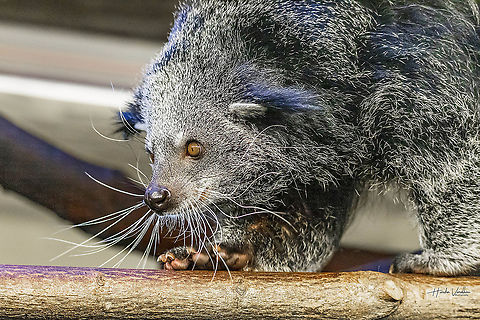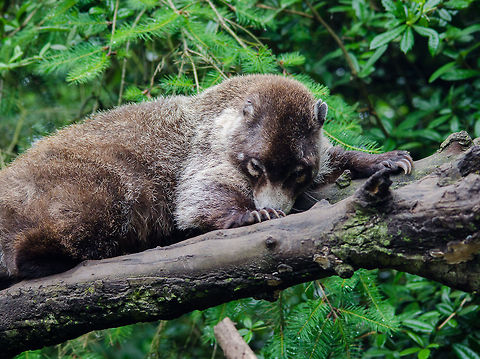
Distribution
Its natural habitat is in trees of forest canopy in rainforest of Bangladesh, Bhutan, Burma, Cambodia, China, India, Indonesia, Laos, Malaysia, Nepal, the Philippines, Sri Lanka, Thailand, and Vietnam.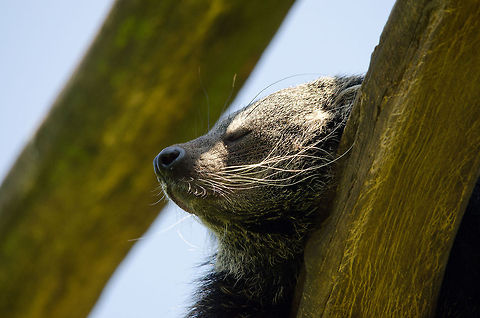
Status
The Palawan binturong of the Philippines is vulnerable due to habitat destruction and poaching for its medicinal uses, its fur and its demand in the pet trade.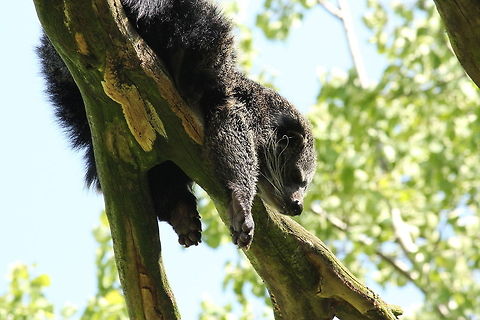
Behavior
The binturong climbs trees and leaps from branch to branch, using its tail and claws to cling while searching for food. It can rotate its hind legs backwards so that its claws still have a grip when climbing down a tree head first.The binturong also uses its tail to communicate, through the scent glands located on either side of the anus in both males and females. The females also possess paired scent glands on either side of the vulva. The scent of binturong musk is often compared to that of warm buttered popcorn and cornbread. The binturong brushes its tail against trees and howls to announce its presence to other binturongs.
Binturongs have an average annual range of 6.2 km² and travel about 688 m per day.
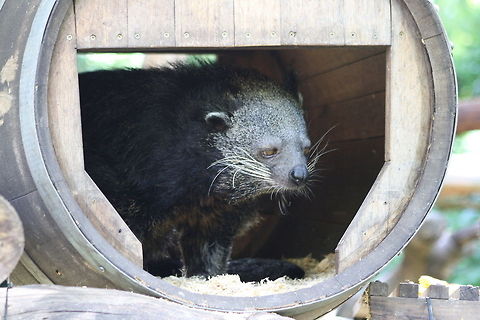
Reproduction
The estrous period of the binturong is 81 days, with a gestation of 91 days. The binturong is one of approximately 100 species of mammal believed by many husbandry experts to be capable of embryonic diapause, or delayed implantation, which allows the female of the species to time parturition to coincide with favorable environmental conditions. Typical birthing is of two offspring, but up to six may occur.The average age of sexual maturation is 30.4 months for females and 27.7 months for males. Fertility lasts until 15 years of age.
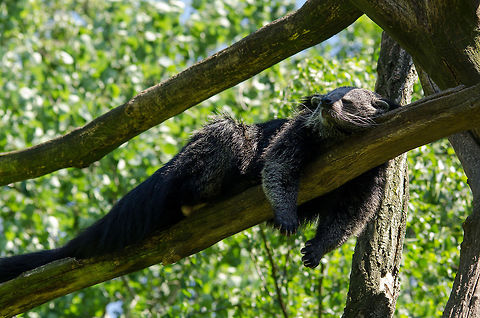
Food
The binturong is nocturnal and sleeps on branches. It eats primarily fruit, but also has been known to eat eggs, shoots, leaves, and small animals, such as rodents or birds. Deforestation has greatly reduced its numbers. It can make chuckling sounds when it seems to be happy and utter a high-pitched wail if annoyed; when cornered, it can be vicious. The binturong can live over 20 years in captivity; one has been recorded to have lived almost 26 years.References:
Some text fragments are auto parsed from Wikipedia.
